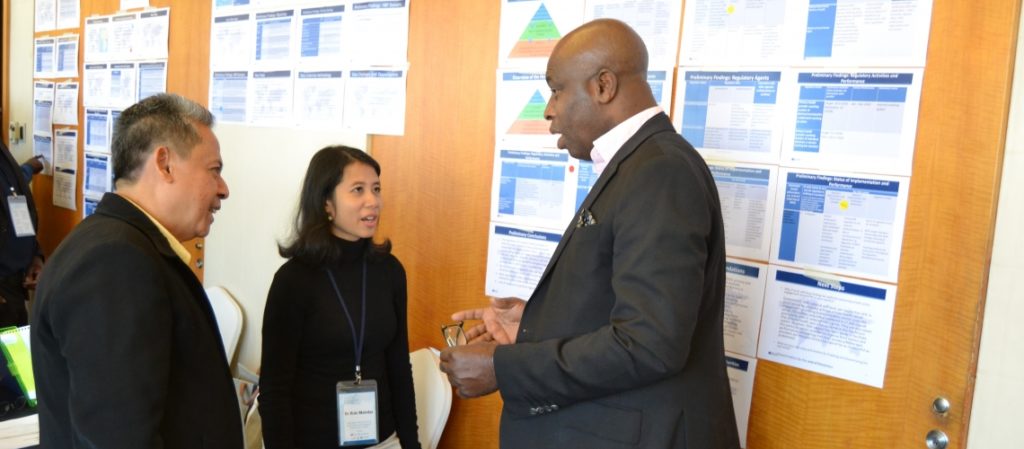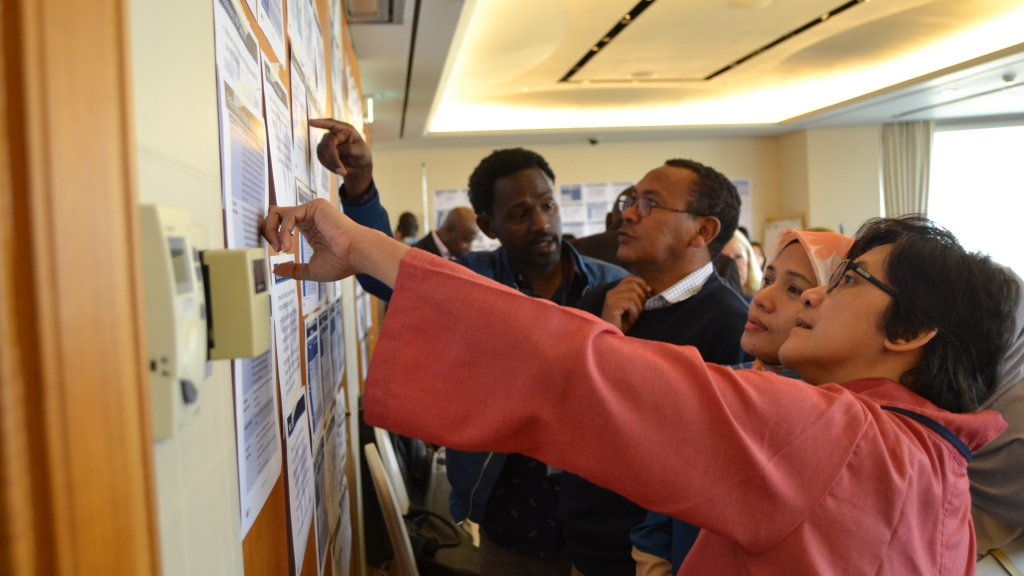A Decade of the Joint Learning Network: A Vision Realized
Stefan Nachuk, Adolfo Martínez Valle, and Somil Nagpal co-authored this post, which originally appeared on the World Bank website.
Launched over a decade ago, the Joint Learning Network for Universal Health Coverage (JLN) has grown to be a community of practitioners and policymakers from 34 countries around the world who engage in practitioner-to-practitioner learning. Through the network, countries find practical solutions to their shared challenges in achieving universal health coverage (UHC). Their products and tools, which harness the practitioners’ joint expertise and experiences, are equipping countries with the “how” of designing and implementing efficient, equitable, and sustainable healthcare systems, while contributing to global knowledge for achieving UHC.
How countries use the JLN to drive UHC progress in countries
The JLN’s country-owned, country-driven learning and governance models—led by a Steering Group composed primarily of country members—ensure that the content developed is demand driven and that learning outcomes are aligned with countries’ priorities. The creation of collaboratives on topics identified by countries keep the content relevant and thereby allows policymakers to participate in the process. This is a departure from traditional technical assistance. In fact, the practitioner-to-practitioner learning approach fosters active learning and thus creates practical knowledge that both members and development partners find valuable.

JLN Practitioners sharing knowledge with one another. © Joint Learning Network
There are currently six technical initiatives with over 10 collaboratives and learning exchanges in progress, covering different thematic areas and involving hundreds of country practitioners. Over 45 knowledge products are already available and widely shared on various platforms throughout the network. This co-created knowledge has been applied in over 60 known ‘use cases’ across JLN and non-JLN countries. They have helped address issues related to costing for provider payments, undertaking medical audits, designing IT systems, policy dialogue for investing in health, and how to assess primary care and vertical integration of care.
One well-recognized example is the Costing Manual. It emerged organically from the lack of good costing data to inform provider payment reforms. Costing practitioners from several countries co-created this practical guidance for policymakers to undertake fit-for-purpose costing exercises despite the constraints in availability of data and methodological challenges that they faced. Even during its development phase, the costing manual was used for costing studies by participating countries in the collaborative (Indonesia, Philippines, Vietnam, India, Malaysia and Ghana). It has since been used in other countries, including Kenya, Kyrgyzstan, Ukraine and Karnataka state in India.
Origins of JLN
The idea emerged during a side session on UHC at the World Health Assembly, in Geneva, Switzerland, when the Rockefeller Foundation invited representatives from four countries (Thailand, India, Ghana, and Vietnam) to speak on their efforts to move towards Universal Health Coverage. Their presentations highlighted several common challenges, and yet to a large extent, each country was walking the journey on their own.
The broad, fuzzy idea of walking this journey together moved a group of committed individuals and institutions to create a platform for practitioners from countries already in the middle of their UHC journey. Its goal has been to gather like-minded people who would work together in a more intensive, structured, and egalitarian manner, to help address the persistent and difficult problems of moving towards UHC. This was followed by a six-country workshop held in February 2010 in Manesar, India, which overwhelmingly echoed the need to establish a platform for such peer-to-peer learning. Subsequently, the first knowledge exchange under the ‘JLN’ umbrella was organized in Bangkok, Thailand, in December 2010.

© Joint Learning Network
Key Principles
The JLN is founded on the principle of country ownership. Member countries are core to the network’s success. Practitioners and policymakers bring their honest challenges and practical experiences, despite insufficient public funding for this work or lack of highly skilled experts in specific areas. This approach, which is different from expert-led learning, is facilitated by a subject matter expert who is also highly skilled in eliciting country knowledge.
The process primarily relies on collaborative members’ contributions over a period of 6 to 24 months. During this time, members also work individually within their countries on action research or pilots and convene periodically to mutually critique and improve each other’s contributions. The resulting product(s) often include practical guidance notes or ‘toolkits’ that can be used by members, and others. This unique approach helps member countries avoid “reinventing the wheel.” It also sparks innovative ideas for health systems reform, with a much more rapid and sustainable learning curve than would have been possible if each member worked in isolation.
What Have We Learned?
Working together and building upon a decade of lessons and evolution, there are several lessons learned from the JLN. These include having motivated champions from member countries, passionate and skilled technical facilitators, and development partners willing to be flexible and innovate. It also shows the importance of clear scoping (what are we trying to produce and how will we use it) by learning collaboratives, committed members as well as a focus on the ethos of joint learning and employing identifiable “use cases,” have also been very important.
Today, the JLN represents the new paradigm in global health. It is serving the need of working together, in bringing together countries, donors, and technical experts to jointly discover timely, practical, and effective solutions towards achieving UHC. The network is well poised to help the world move closer to the SDG target of UHC by 2030 in its next decade.
Related Links:
- JLN@10 website: Celebrating Ten Years of Joint Learning Towards UHC
- BROCHURE: JLN knowledge products
- BLOG: Joint Learning Network: Mobilizing domestic resources for health
- BLOG: Joint Learning Network: How to improve efficiency through systematic priority setting
- BLOG: Joint Learning Network: solving problems together for UHC
